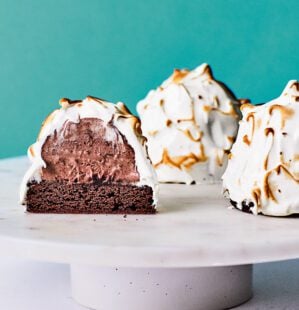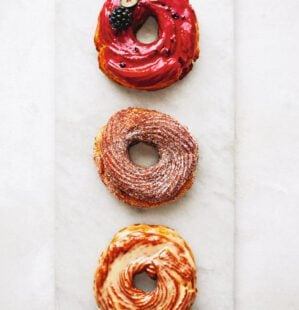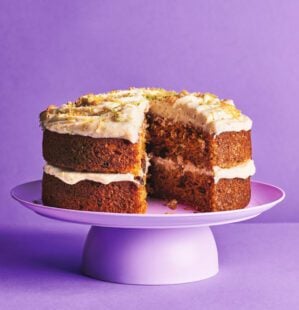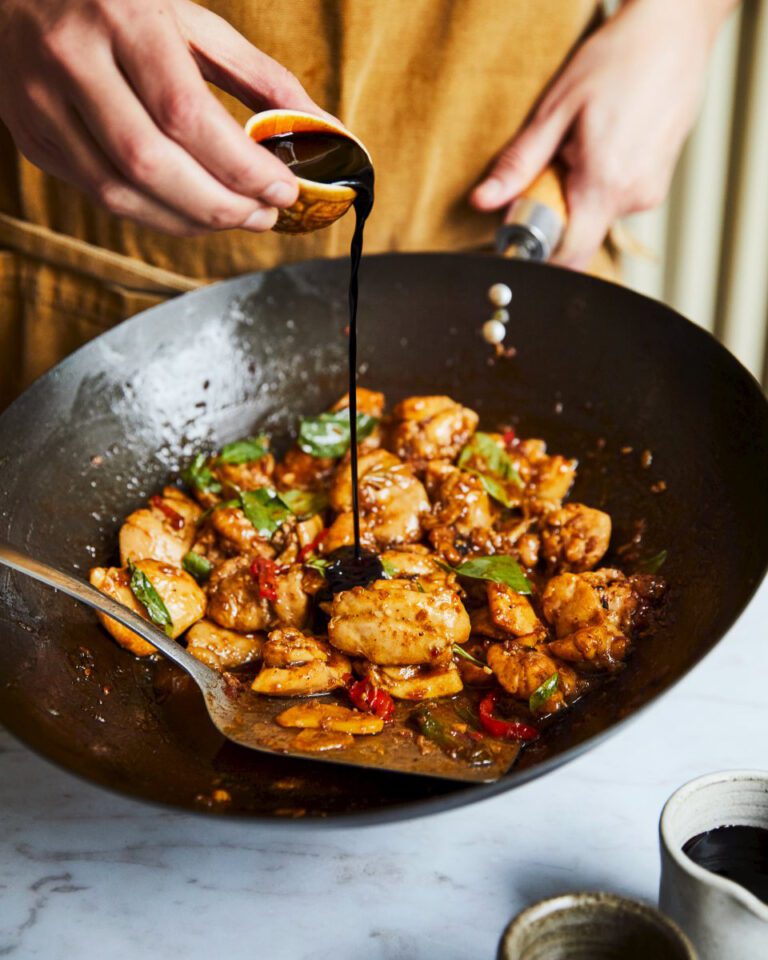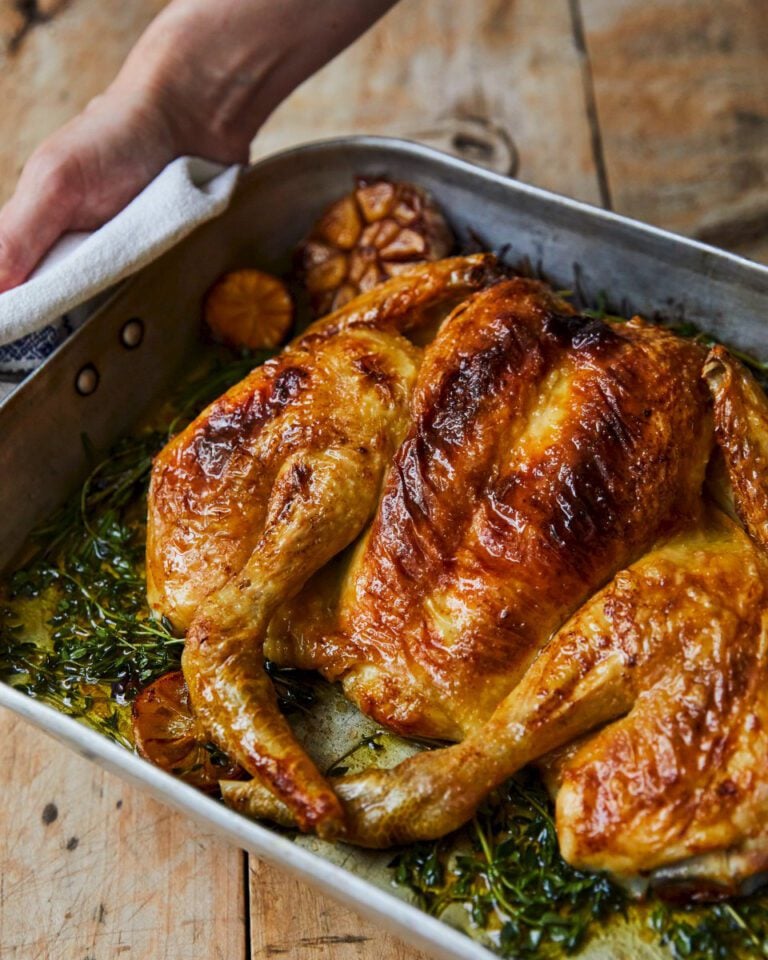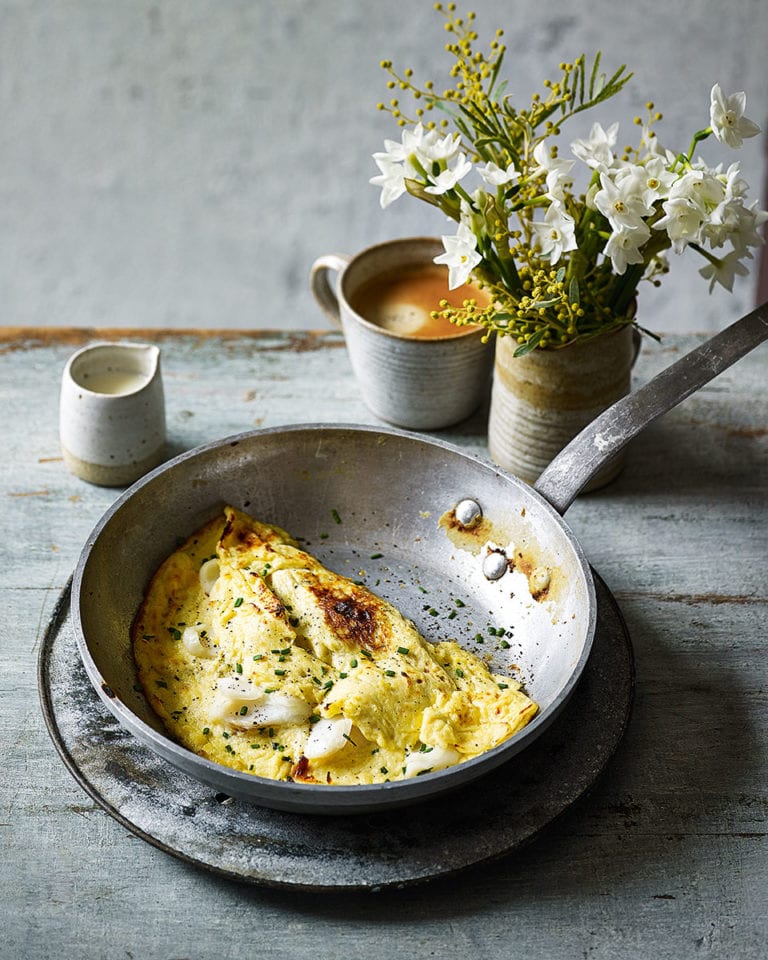How to plate like a top chef
A meal at a Michelin-starred restaurant is a feast for the eyes as much as the taste buds – but how do top chefs work out how to plate their creations? We delve into the mind of two-starred restaurant chef James Knappett to find out, before tasking our own food producer Pollyanna Coupland with re-creating one of his desserts for some at-home wow-factor… Plus, discover the delicious. food team’s top food styling secrets.
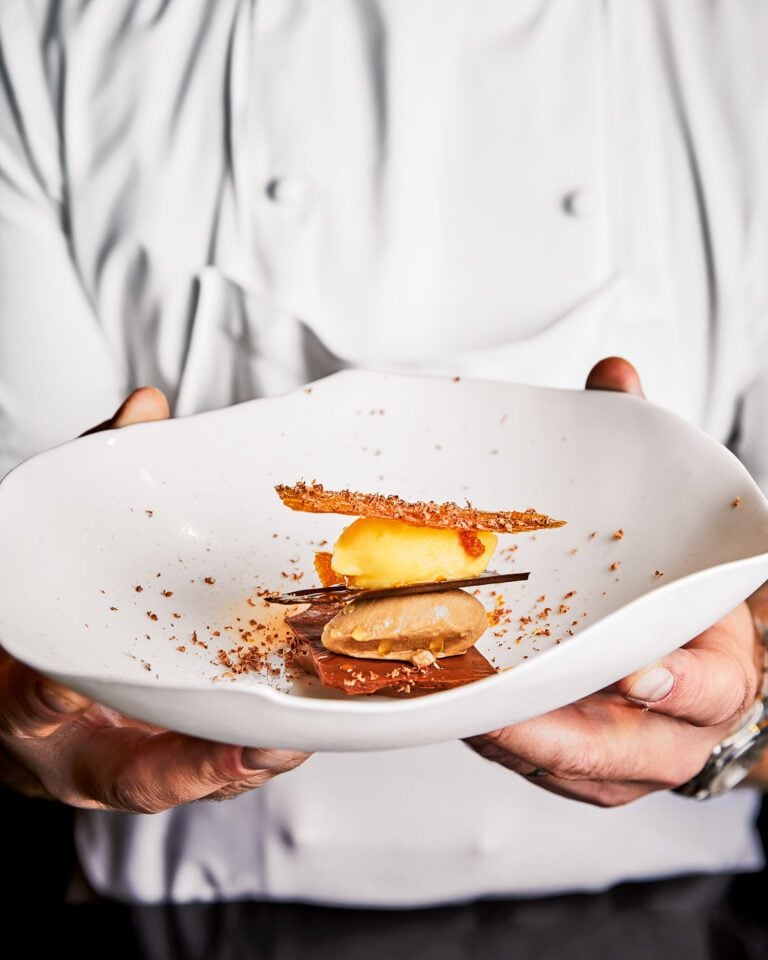
Kitchen Table – a restaurant in London’s Fitzrovia with two Michelin stars – is about as far removed from home cooking as you can get. Up to 20 courses make up a meal there, created and served in a flurry of action from the open kitchen in front of you. Each dish is a tour de force in its own right, but the way they flow from one to the next, creating an overall experience greater than the sum of its parts, is where the real magic lies. Let’s just say it’s a bit of a step up from last night’s cobbled-together fridge-raid pasta.
Flavour comes first…
At the helm of Kitchen Table is chef James Knappett. He controls the crew of chefs, who cook and plate up the dishes in full view of the diners each night. His food is always flavour-led, but at this level of fine dining, it needs to look as good as it tastes.
“All chefs are different, but any good chef will always put flavour above all else,” he explains. “Saying that, you do need to think about what a dish looks like. Desserts are where I tend to be more adventurous with presentation because I like to keep things like meat and fish simple – I’d never turn fish into a mousse or even marinate meat, because I think the best way to enjoy those things is in their natural state, both visually and flavour-wise.
Something like a cake, however, can be cut into shapes and still be a cake. I wouldn’t take a fluted pastry cutter to a duck breast, but with sweet dishes there are more opportunities to play around.”
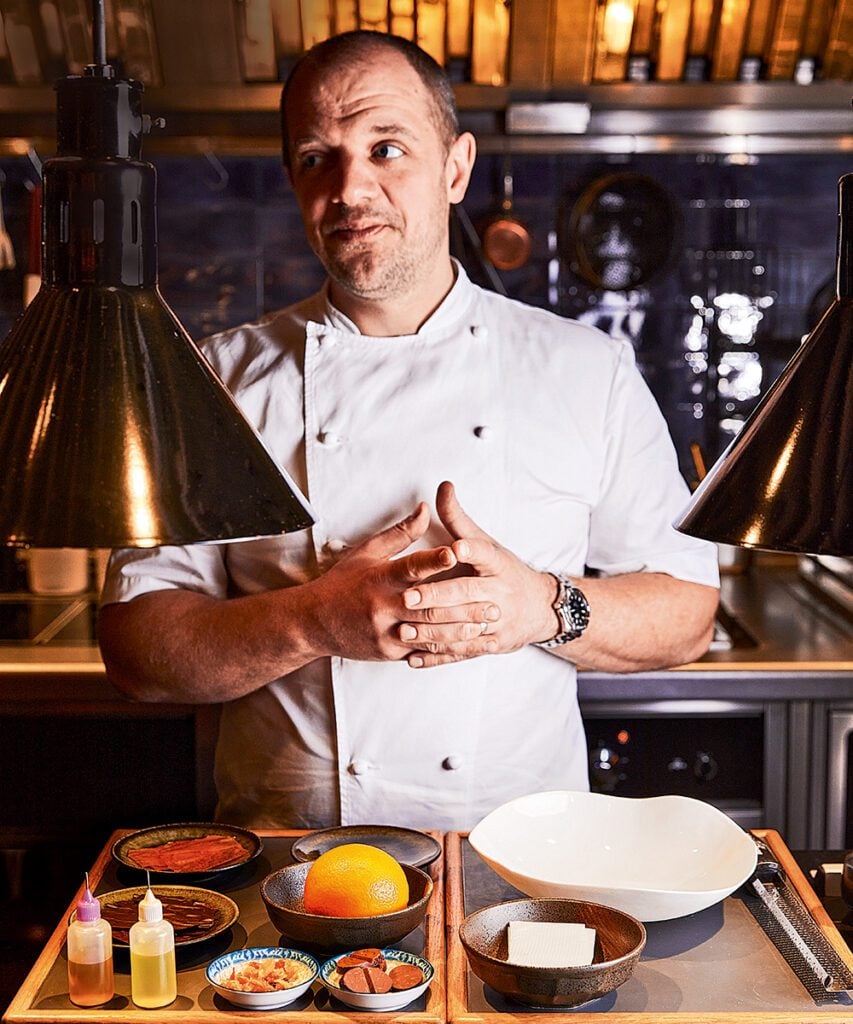
…but presentation matters
We’re at Kitchen Table to see how James plates one of their desserts. ‘Chocolate, orange and coffee’ is a tower of ice creams, sorbet, infused oils and tuiles, all showcasing how the three ingredients go perfectly together. The inspiration for the dish came from, of all things, eating a Terry’s Chocolate Orange. “Even though it’s not the finest-quality chocolate, I love the nostalgia of eating a chocolate orange, so I thought why not play around with that?” he says.
“We added coffee because it pairs so well with the other two flavours and makes the dish feel a bit more mature. When it came to how we’d serve it, we could have had the ice creams next to each other, each topped with a tuile, but the reason it’s stacked up like that is so you can crack your spoon on the top and cut through all the layers. That way, you get a little bit of everything with each mouthful.
It’s a bit like a trifle. You wouldn’t ever just serve yourself the top layer; you want a cross section of the cream, jelly and sponge. Individually they are OK, but it’s when you experience them all at once that the dish really stands out.”
It’s all about balance
This is a perfect example of how texture can inform the presentation, and this in turn has an important bearing on the taste. The three ingredients are served in different formats (frozen, infused into oil and in crisp shards), each offering a different strength of flavour. Stacking them on top of each other is visually striking, but also helps the diner experience each element at the same time. It’s about balance – sometimes literally.
“When you experience all the layers at once, the dish stands out"
How James makes his dish
“We start with a base of 72% Madagascan Pump Street Chocolate ice cream, topped with a frozen shard made from melted chocolate and sugar. On top of that you have the coffee ice cream, which we dress with an oil infused with raw coffee beans. Then there’s a tuile made from espresso, followed by an orange sorbet. Over that is an oil made from orange peel, and we add dehydrated orange segments. On top of that is a crisp made from dehydrated orange juice, then we finish it off with finely grated orange zest and chocolate.”
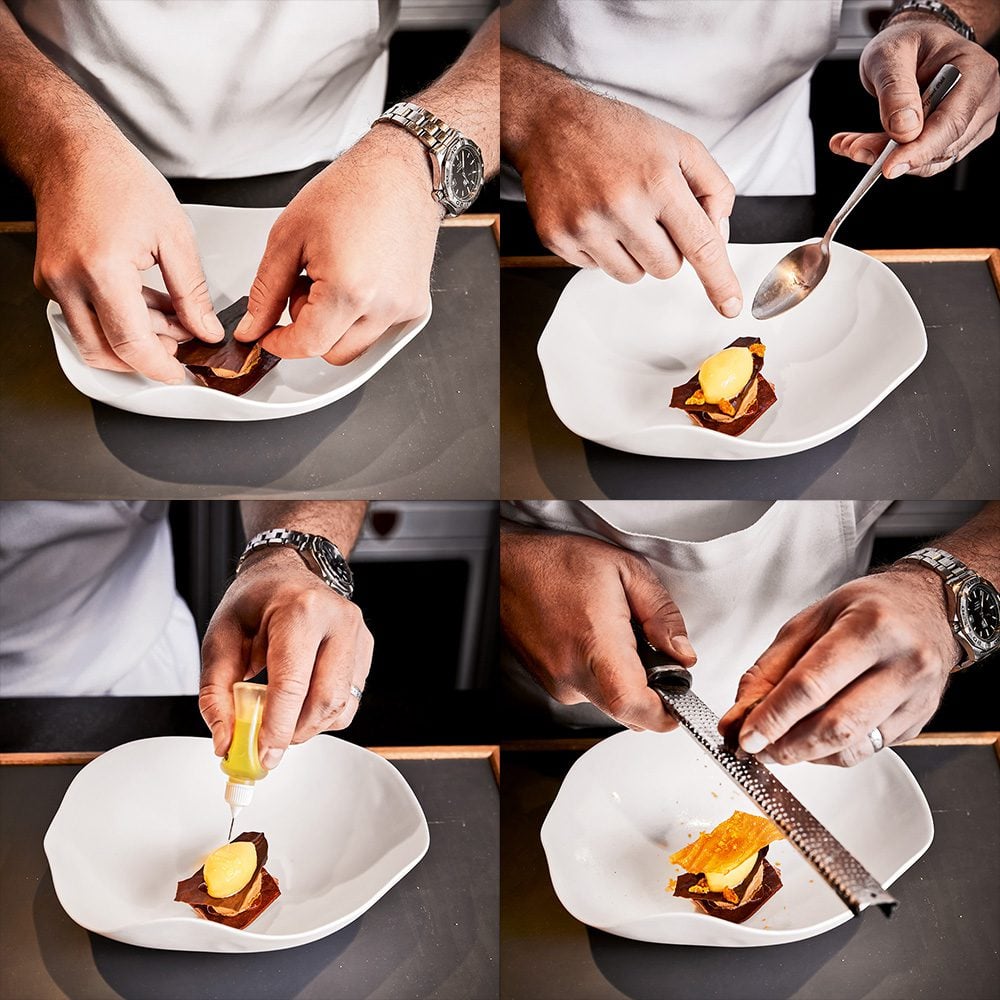
Plating principles to take away…
James’s dish takes a lot of skill and time to prepare. Most of us aren’t going to be dehydrating orange juice or infusing raw coffee beans into oil anytime soon, but you can take some key principles from the plating.
Contrasts
As well as flavour and colour, contrast is also about texture. If everything has the same texture, your taste buds fall asleep – that’s why you add croutons to soup, asparagus tips or peas to risotto – and why crunchy crisps go so well with a soft sandwich.
Stacking vertically
Building towers of food instead of putting them next to each other adds drama, and instantly looks bolder and more striking. Think of the tall, multi-layer beef burgers you see in adverts versus the flatter reality. Even just ruffling up smoked salmon or leaning one sandwich half on another to lift it off the plate instantly looks better.
Temperature check
“Use the right temperature plates I don’t like eating hot food off a cold or room temperature plate, even at home. As a cook, a warmed plate gives you more time to check you’re happy with how everything looks. Chilled or frozen crockery is a must for frozen desserts too.”
Don’t sauce too soon
“Let people add sauce themselves at the table. Take fish and chips – if you squeeze lemon all over the fish at the start, by the time you get halfway through it, the batter has turned soggy. It’s much better to serve a lemon wedge on the side, then season each forkful with a little squeeze of it as you go.”
A note on herbs
“Think about the integrity of ingredients. Salad leaves will need to be tossed in a vinaigrette, but toss the herbs with it too and the acidity of the vinegar will destroy them. Add them on top at the very end so they keep their colour, texture and flavour.”
Pollyanna’s version
“To recreate James’s dish I’ve kept the flavour combo the same,” says Pollyanna. “Good quality shop-bought chocolate ice cream forms the base, followed by shards made from melted chocolate. Segments of fresh orange replace the sorbet while retaining that citrussy zing, and some instant coffee powder mixed into whipped cream provides the toasty coffee hit. The final tuile on top is a neat (and simple) trick that creates a lacy crisp using just flour, water and olive oil. And like the original, I’ve finished with a pretty dusting of orange zest and grated chocolate. It doesn’t quite match the depth of flavour and skills in James’s dish, but it’s an impressive (and doable) tower of textural contrast to serve at your next dinner party.”
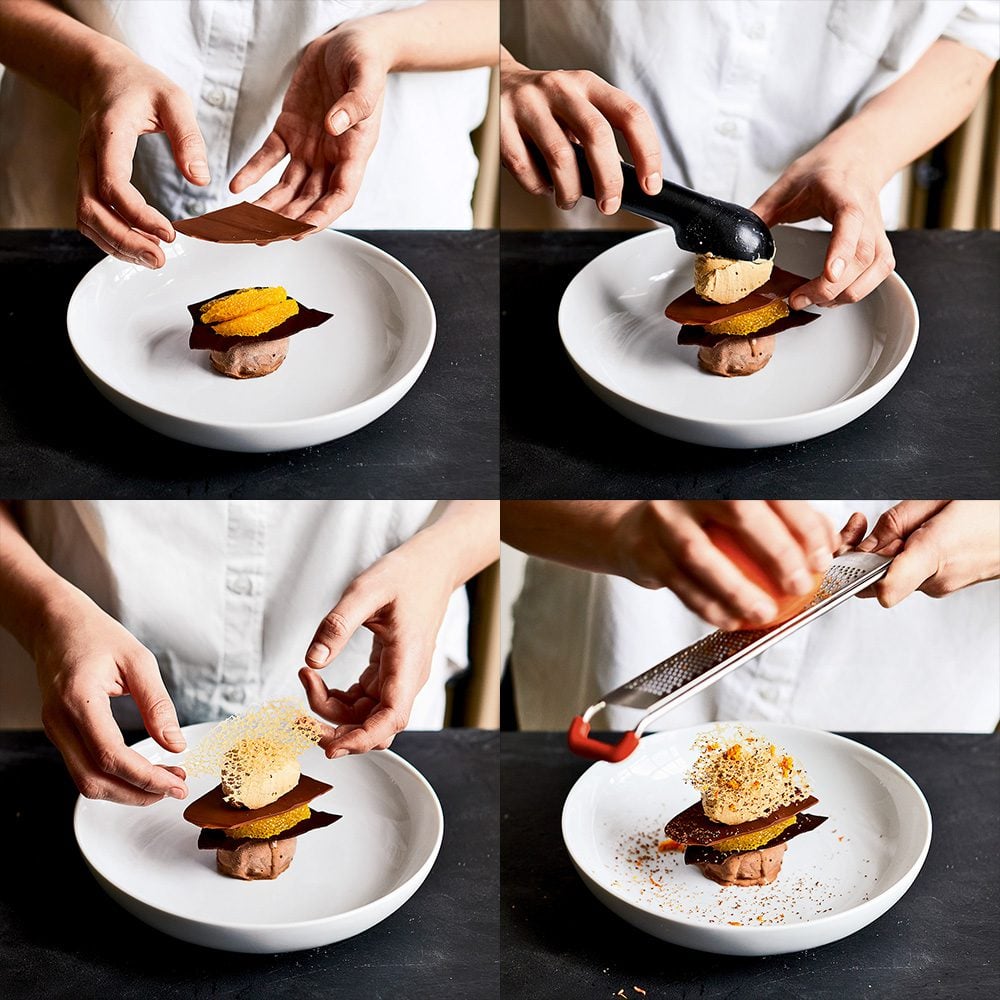
Ready to plate like a pro? Get the recipe for Pollyanna’s ‘home-style’ chocolate, coffee and orange dessert.
The delicious. food team’s styling secrets
Food producer Emily Gussin
- Give the food some space: instead of piling a salad into a deep bowl, spread it out on a platter so all the ingredients are on show.
- Don’t cover the dish in sauce. Serve it on the side or spread it out on the plate and sit the food on top.
Food producer Pollyanna Coupland
- Think about shapes: keep them similar or different. If you have round mushrooms in a dish, do you want to slice your carrots into rounds (to complement) or batons (to contrast)?
- Finish with a garnish: they can add colour and variety. Many of the best-tasting dishes are various shades of brown, so let simple garnishes add pops of vibrancy.
Head of food Tom Shingler
- Putting a dollop of soured cream or mayo on the plate? Dip a clean teaspoon in hot water, then make an indent with it in the dollop. Fill with olive oil (or, better, a flavoured oil) and get an instant cheffy finish.
- Slice chicken breasts, steaks and pork chops before they go on the plate, then arrange them in their original whole shape. Much more refined than a big lump of meat.
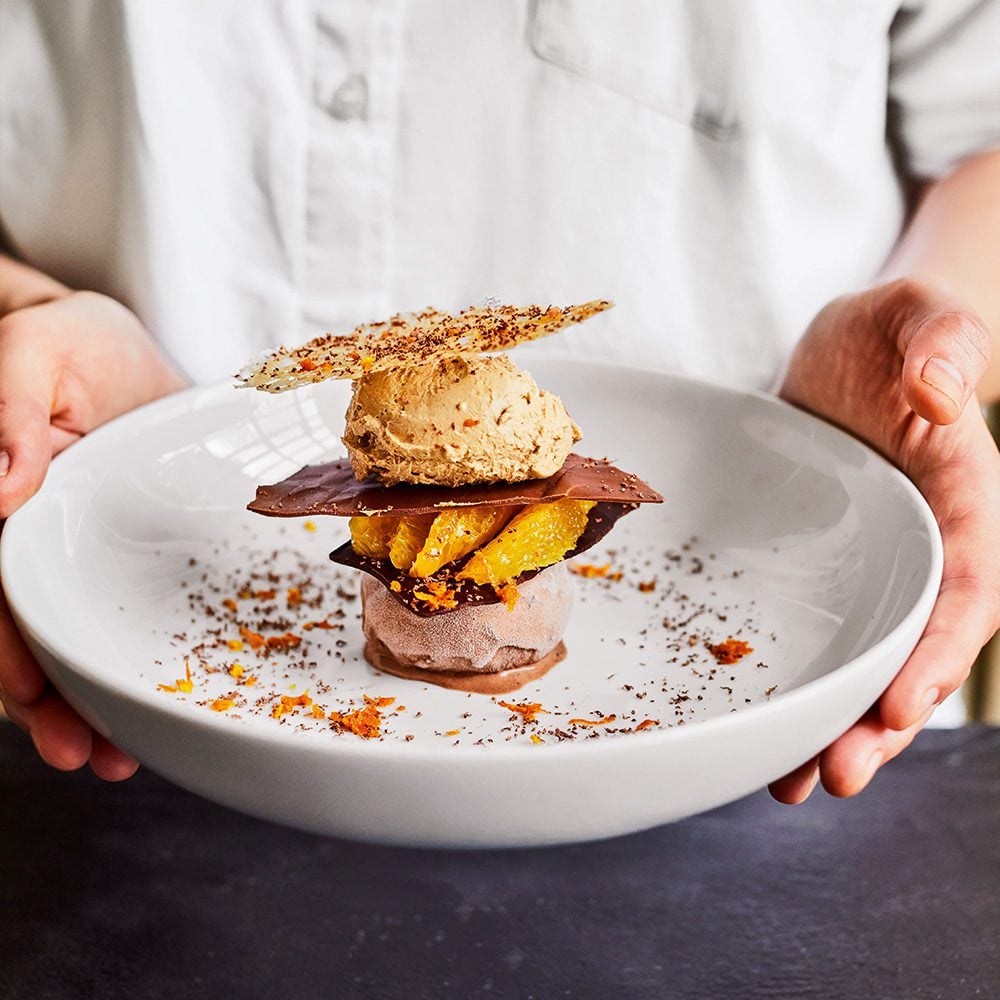
Discover more cookery techniques and know-how in our Be A Better Cook section.
Subscribe to our magazine
Food stories, skills and tested recipes, straight to your door... Enjoy 5 issues for just £5 with our special introductory offer.
Subscribe
Unleash your inner chef
Looking for inspiration? Receive the latest recipes with our newsletter
